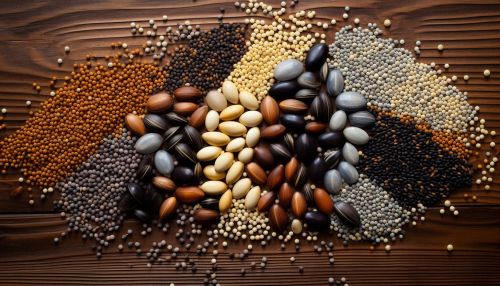Anthropochory
Overview
Anthropochory, derived from the Greek words "anthropos" (human) and "chorein" (to disperse), refers to the process of seed dispersal by humans. This process plays a significant role in the distribution and propagation of plant species across different geographical regions. Anthropochory can be intentional, such as through agriculture and horticulture, or unintentional, as a result of human activities like travel and trade Seed Dispersal.


History
The concept of anthropochory has been recognized since ancient times, with evidence of human-mediated seed dispersal found in archaeological sites dating back to the Neolithic period. Early humans, through their nomadic lifestyle and the practice of gathering and storing food, inadvertently contributed to the spread of plant species Neolithic Period.
Types of Anthropochory
Anthropochory can be categorized into three main types:
- Deliberate Anthropochory: This involves the intentional planting and cultivation of seeds by humans for purposes such as agriculture, horticulture, and landscaping.
- Accidental Anthropochory: This occurs when seeds are unintentionally transported by humans, often attached to clothing, footwear, or vehicles, or mixed in with agricultural produce.
- Mediated Anthropochory: This involves the indirect dispersal of seeds by humans, such as through the dumping of garden waste or the release of seeds into the environment during food consumption.
Role in Plant Distribution
Anthropochory has played a crucial role in shaping the distribution of plant species across the globe. Human activities, particularly trade and colonization, have led to the introduction of non-native plant species to new environments, often with significant ecological consequences Invasive Species.
Impact on Biodiversity
While anthropochory can contribute to biodiversity by introducing new plant species to an area, it can also pose a threat to native species. Invasive species, often introduced through human-mediated seed dispersal, can outcompete native plants for resources, leading to a decrease in biodiversity Biodiversity.
Anthropochory in Agriculture
In agriculture, anthropochory is a key method of crop propagation. Farmers intentionally disperse seeds to cultivate crops, contributing to food security and economic development. However, accidental anthropochory can also lead to the spread of agricultural pests and diseases Agriculture.
Anthropochory in Urban Environments
In urban environments, anthropochory plays a significant role in the distribution of plant species. Human activities, such as landscaping and waste disposal, can lead to the spread of both native and non-native plant species Urban Ecology.
Conservation Implications
Understanding anthropochory can aid in conservation efforts. By identifying the pathways of human-mediated seed dispersal, conservationists can develop strategies to prevent the spread of invasive species and protect native biodiversity Conservation Biology.
